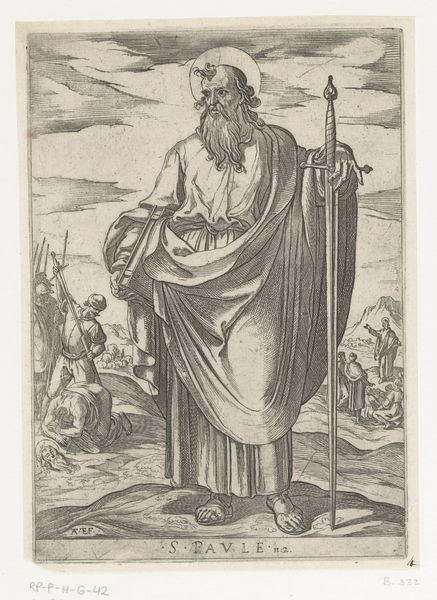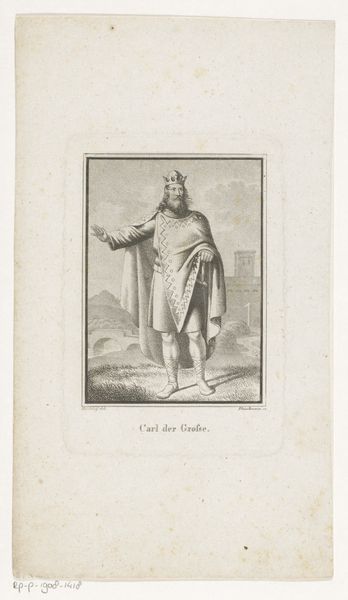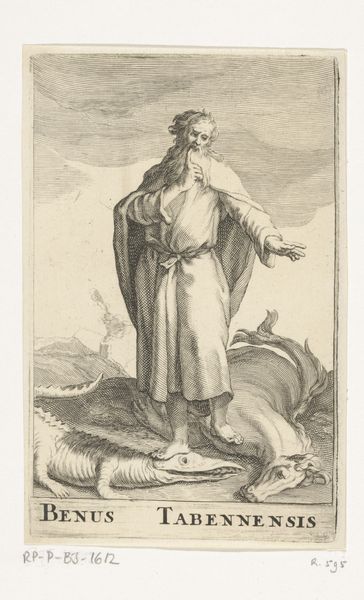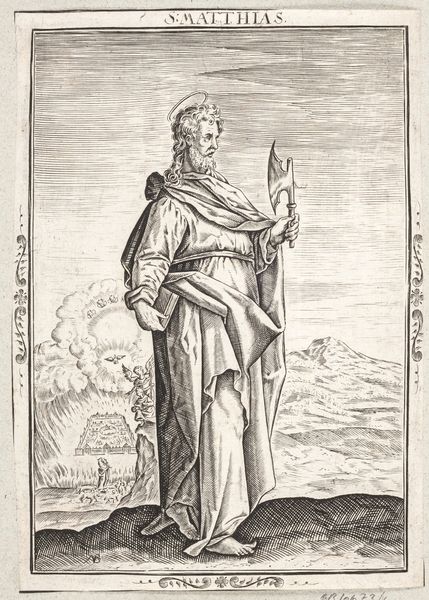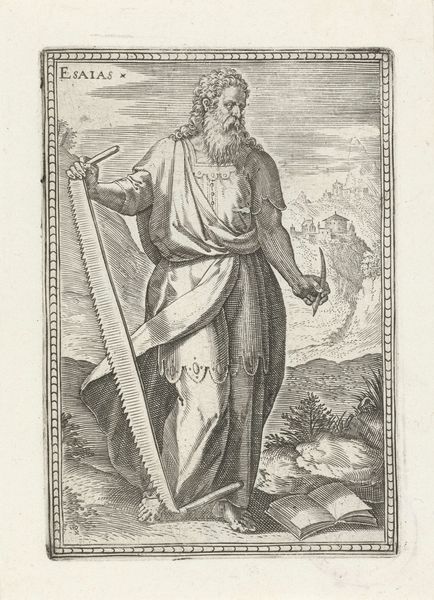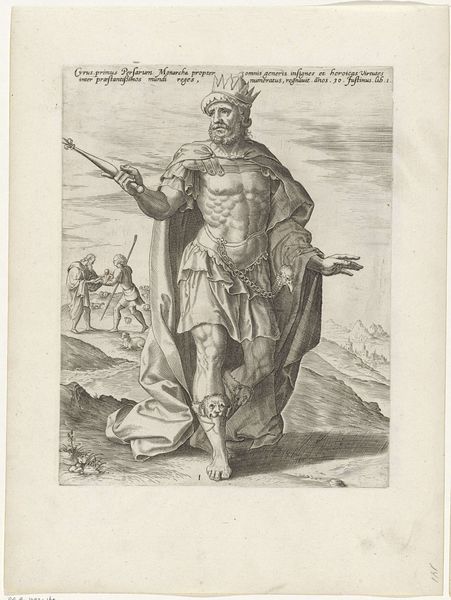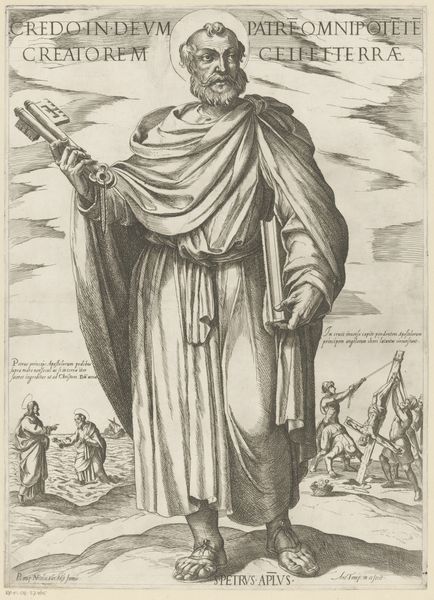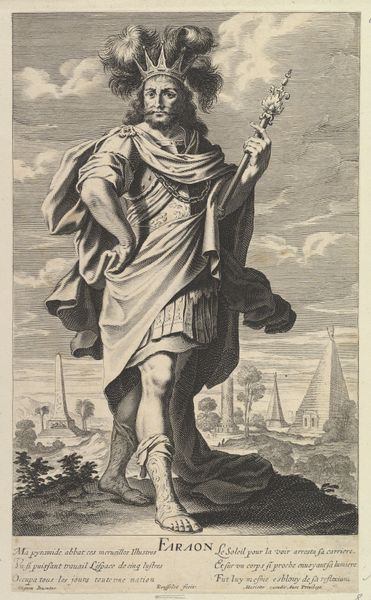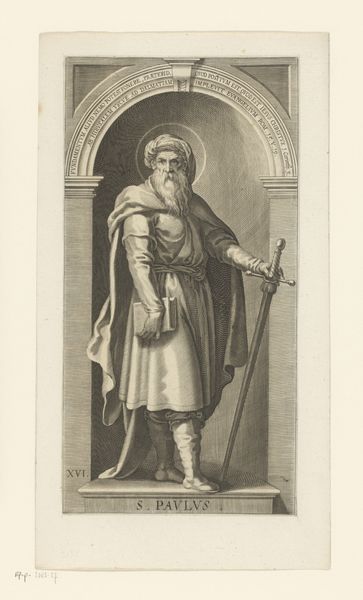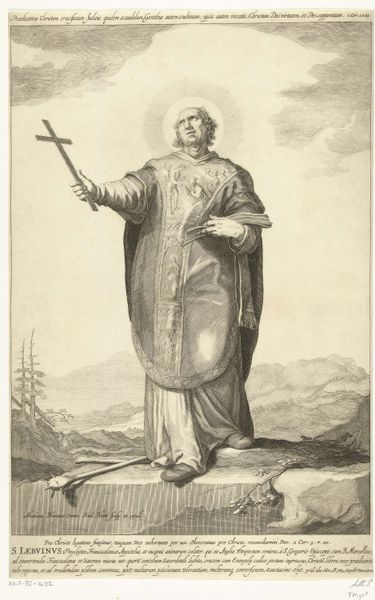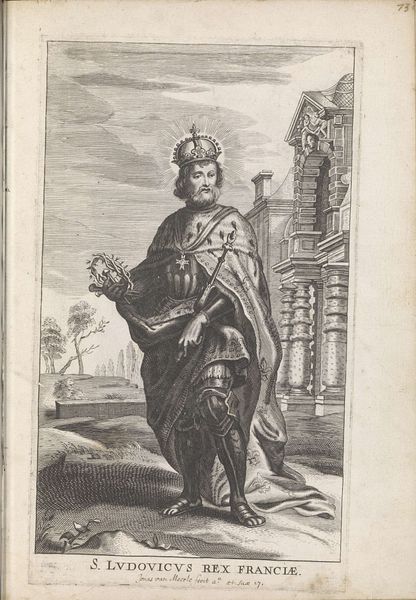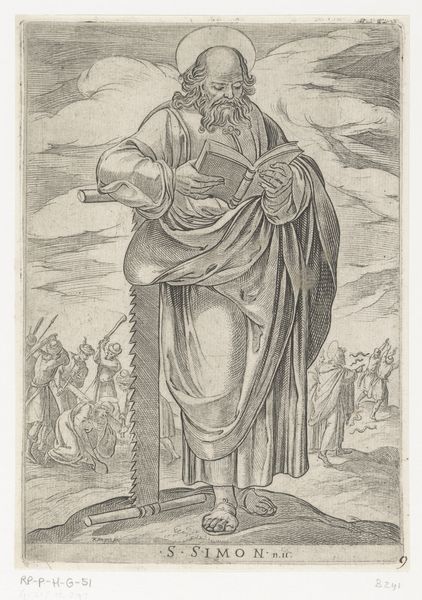
engraving
#
portrait
#
baroque
#
old engraving style
#
figuration
#
line
#
history-painting
#
engraving
#
sword
Dimensions: height 374 mm, width 243 mm
Copyright: Rijks Museum: Open Domain
Curator: Here at the Rijksmuseum, we have a compelling portrait of "Karel de Grote," or Charlemagne, crafted between 1632 and 1657 by Jean Couvay. It's an engraving that vividly depicts the iconic ruler. Editor: My initial thought? Stark. The lines are so precise, and the grayscale emphasizes the weight of his regalia and the severity of his gaze. You really feel the presence of power here, presented materially through the engraving itself. Curator: Absolutely. The image seeks to immortalize Charlemagne, situating him as a key figure in European history. The globe he holds topped with a cross, the sword, the crown - they aren't just symbols of authority; they are tools that have been invested with power. Couvay's choice of engraving allows for mass reproduction, disseminating this ideal across society. Editor: It’s interesting how engraving, traditionally associated with documentation and dissemination, elevates a ruler. We see the physical labor involved—the fine, etched lines giving form to ermine and steel, signifying the extraction and processing of those resources. This process turns Charlemagne into an object of symbolic value, even a commodity in a way, designed for consumption. Curator: That's a shrewd point. It's not just a historical document, but a careful construction of image, reflecting contemporary ideas about leadership. The distribution would have been carefully managed to influence specific audiences, reinforcing the legacy. Editor: What I find most interesting is the choice of medium. The deliberate action, cutting into a metal plate is translated to mass produced prints—democratizing but also distributing an exclusive kind of authority. Curator: It all contributes to the making of Charlemagne as an enduring symbol. It also signifies a change in how leadership can be spread, how it’s consumed visually through easily copied material form, accessible across places that hadn't yet experienced such a level of standardized image creation. Editor: Precisely, an act of disseminating authority by means of making authority into just another artifact. Food for thought about how power shifts with production and access.
Comments
No comments
Be the first to comment and join the conversation on the ultimate creative platform.
